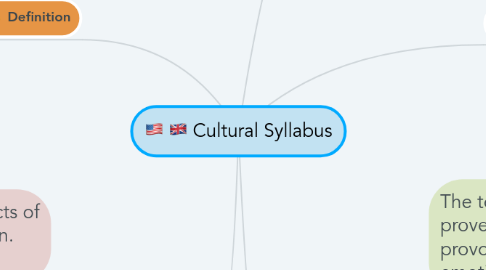Cultural Syllabus
Sandy Alonzoにより


1. Definition
1.1. It has been created to propose a way of integrating the teaching of language and culture.
1.2. It proceeds from our belief that language is part of a culture and to participate meaningfully in an intercultural context, one needs to possess knowledge as well as skills for inter-cultural communication.
2. Disadvantages
2.1. It is difficult to understand what aspects of geography should be concentrated on. (vocabulary)
2.2. it would be nearly impossible to arrange a syllabus that would be of continuing interest to an entire class of students.
2.2.1. Students are unlikely to be interested in history or geography.
3. Objectives
3.1. To get knowledge about the target culture
3.2. To be aware of its characteristics and differences between the target culture and the learners' own culture.
3.3. To understand socio-cultural implications of the language and laguage use
3.4. To increase affective goals
3.4.1. interest
3.4.2. intellectual curiosity
3.4.3. emphaty
4. Advantages
4.1. The topics suggested by the Syllabus proved to be both interesting and provocative and found remarkable emotional response among the students.
4.2. It helps to develop learners’ ability to communicate with each other across linguistic and cultural boundaries.
4.3. It helps to understand the sociocultural elements of a language to gives to the learner an insight into the social function of the language, which in turn helps to achieve better learning.
4.3.1. Awareness of the existing common values along with the cultural and religious diversities
